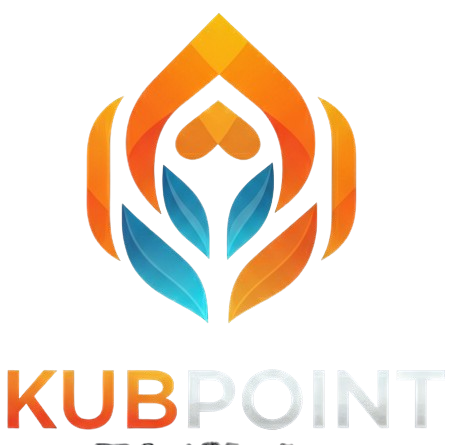In today’s data-driven economy, organizations are no longer asking if they should invest in data, they are asking how fast they can turn data into decisions. The answer, increasingly, points to Microsoft Fabric.
Fabric is not just another analytics tool – it is a strategic inflection point. It reimagines how data is ingested, processed, governed, and activated across the enterprise. For CIOs, data leaders, and architects, Fabric represents a unified, AI-powered platform that simplifies complexity and unlocks agility.
Strategic Vision: From Fragmentation to Fabric
For years, enterprises have wrestled with fragmented data estates – multiple tools, siloed systems, and brittle integrations. Microsoft Fabric flips that model on its head by offering:
- A unified SaaS experience that consolidates Power BI, Azure Synapse, Data Factory, and more into one seamless platform.
- OneLake, a single, tenant-wide data lake that eliminates duplication and simplifies governance.
- Copilot-powered intelligence, enabling users to build pipelines, write SQL, and generate reports using natural language.
This convergence is not just technical – it is cultural. Fabric enables organizations to build a data culture where insights flow freely, collaboration is frictionless, and innovation is democratized.
Technical Foundations: What Makes Fabric Different?
Microsoft Fabric is built on a robust architecture that supports every stage of the data lifecycle:
Unified Workloads
Fabric offers specialized experiences for:
| Experience | Purpose |
| Data Engineering | Spark-based processing and orchestration |
| Data Factory | Low-code data ingestion and transformation |
| Data Science | ML model development and deployment |
| Real-Time Intelligence | Streaming analytics and event processing |
| Data Warehouse | Scalable SQL-based analytics |
| Power BI | Visualization and business intelligence |
Each workload is natively integrated with OneLake, ensuring consistent access, governance, and performance.
Open & Flexible Architecture
Fabric supports open formats like Delta Lake and Parquet, and allows shortcuts to external data sources (e.g., Amazon S3, Google Cloud) without duplication. This means:
Seamless multi-cloud integration, reduced storage costs, and faster time-to-insight
Real-Time & Predictive Analytics
With Synapse Real-Time Analytics and Copilot, Fabric enables both reactive and proactive decision-making. You can monitor live data streams, trigger automated actions, and build predictive models – all within the same environment.
Business Impact: Efficiency, Governance, and Scale
Fabric is not just a technical upgrade – it is a business enabler. Consider these outcomes:
Lumen saved over 10,000 manual hours by centralizing data workflows in Fabric, enabling real-time collaboration across teams.
Organizations using Fabric report faster deployment cycles, improved data quality, and stronger compliance alignment through built-in Microsoft Purview governance tools.
Fabric’s serverless architecture and auto-scaling capabilities also ensure that performance scales with demand – without infrastructure headaches.
For most of my career, I have lived in the tension between data potential and operational reality. Countless dashboards, disconnected systems, and the constant refrain of “Why can’t we see this all-in-one place?” – these challenges were not just technical; they were strategic. They held back decisions, slowed down innovation, and clouded clarity.
When Microsoft Fabric was introduced, I will be honest: I was cautiously optimistic. Another tool? Another shift? But what I have found over the past few months has genuinely redefined how I think about data strategy – not just as a concept, but as an everyday capability.
Stitching It All Together
Fabric does not feel like another tool bolted onto an existing stack. It is more like a nervous system – a unified platform that brings Power BI, Azure Synapse, Data Factory, and real-time analytics into one seamless experience. The moment I began exploring OneLake, Microsoft’s single, tenant-wide data lake, I realized the gravity of what Fabric enables.
No more juggling data silos or manually reconciling reports across teams. The clarity of having one source of truth, built on open formats and intelligent orchestration, gave my team back time we did not know we were losing.
AI as an Accelerator, not a Distraction
I have also leaned into Copilot within Fabric, and the shift has been tangible. Tasks that once required hours of scripting or SQL wrangling are now powered by natural language – speeding up prototype pipelines, unlocking what-if analysis, and even supporting junior teammates with intuitive guidance.
Fabric AI features did not just boost productivity, they democratized it. Suddenly, it was not just the data engineers who had power; analysts, business leaders, and even non-tech users can participate meaningfully in the data conversation.
Whether you are navigating data mesh architectures, scaling AI initiatives, or tightening governance through tools like Microsoft Purview, Fabric lays the foundation to lead with data – efficiently, securely, and intelligently.
For me, this journey into Fabric has been about more than technology. It is a shift in mindset – from reacting to data, to owning it. And as I step more into writing and sharing what I have learned, I am excited to help others navigate this transformation too.
The Future of Data Strategy Starts Here
Microsoft Fabric signals a shift from tool-centric data management to a platform–centric data strategy. It empowers organizations to:
Break down silos and unify data operations. Embed AI into every layer of analytics. Govern data with confidence and clarity. Enable every user – from engineer to executive – to act on insights.
In short, Fabric is not just the next step, it is the next wave.

